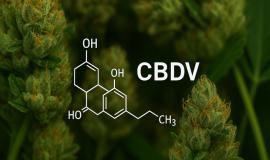Cannabis Trichomes: What Are They and What Do They Do?
Explore the secrets of cannabis trichomes - tiny structures with big impacts on potency and effects.
What are Trichomes in Plants?
Trichomes are tiny, often microscopic structures that appear on the surfaces of many plants, including cannabis. These structures are primarily known for their role in plant protection and their contribution to a plant's resilience against various environmental stressors. The structure of trichomes can vary significantly; however, they generally consist of a stalk and a glandular head. This configuration allows them to serve multiple functions, ranging from physical barriers to chemical production centers that deter herbivores and pathogens.
Types of Trichomes
Trichomes can be categorized into two main types: glandular and non-glandular. Glandular trichomes are perhaps the most significant for cannabis enthusiasts because they produce and store the plant's cannabinoids, terpenes, and other valuable phytochemicals. Non-glandular trichomes, on the other hand, do not produce these substances and are often involved in protecting the plant through physical means like creating a barrier against insects and small animals.
What are the Trichomes of a Flower?
In flowering plants, trichomes are particularly prevalent and play an essential role in both protection and attraction. They can deter herbivores and pests while attracting pollinators with their aromatic secretions. In cannabis, the trichomes of the flower are where the majority of the plant's cannabinoids and terpenes are synthesized, making them crucial for the quality and potency of the cannabis flower.
What is the Purpose of the Trichomes?
The primary purpose of trichomes is plant defense. By producing a range of chemical compounds, trichomes can repel harmful insects and prevent fungal infections. Additionally, the physical structure of trichomes can protect plants from excessive UV radiation and help reduce water loss by covering the plant surfaces, thereby creating a less favorable environment for bacteria and fungi to grow.
How do Trichomes Defend Plants?
Trichomes defend plants by producing an array of chemical deterrents that can repel various pests. These chemicals can be toxic, repellant, or both to insects and other herbivores that might otherwise consume the plant. Additionally, the sticky, resinous substances produced by glandular trichomes can physically trap insects, further enhancing plant defense.

Caption (in italics small) - Photo by greendotlabs.com
What are the Effects of Trichomes?
For cannabis, trichomes are critical as they contain THC, CBD, and other cannabinoids that have psychoactive and therapeutic effects. Trichomes is what gets you high when you consume marijuana. The potency and effects of a cannabis product can often be directly correlated with the density and health of the trichomes from which it was derived.
Conclusion
Trichomes play a pivotal role in the life and utility of cannabis plants. By understanding trichomes, cultivators can better manage their growth practices to optimize the quality and potency of their yield. For consumers, knowledge about trichomes enhances appreciation of the complexities involved in developing the strains they enjoy. Whether you're a grower or a consumer, the tiny, mighty trichome is a crucial part of what makes cannabis such a unique and valuable plant.
Health Disclaimer: The information provided in this article is for educational purposes only and should not be taken as medical advice. Always consult with a qualified healthcare provider before using cannabis, particularly if you have pre-existing conditions or are taking medication.






















